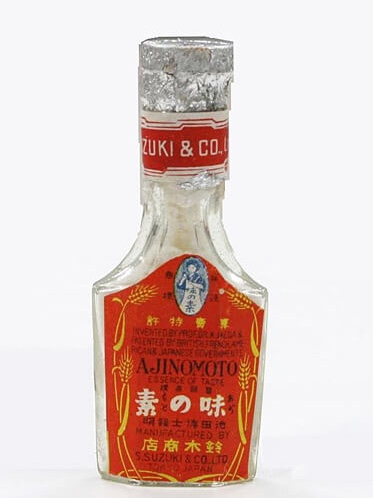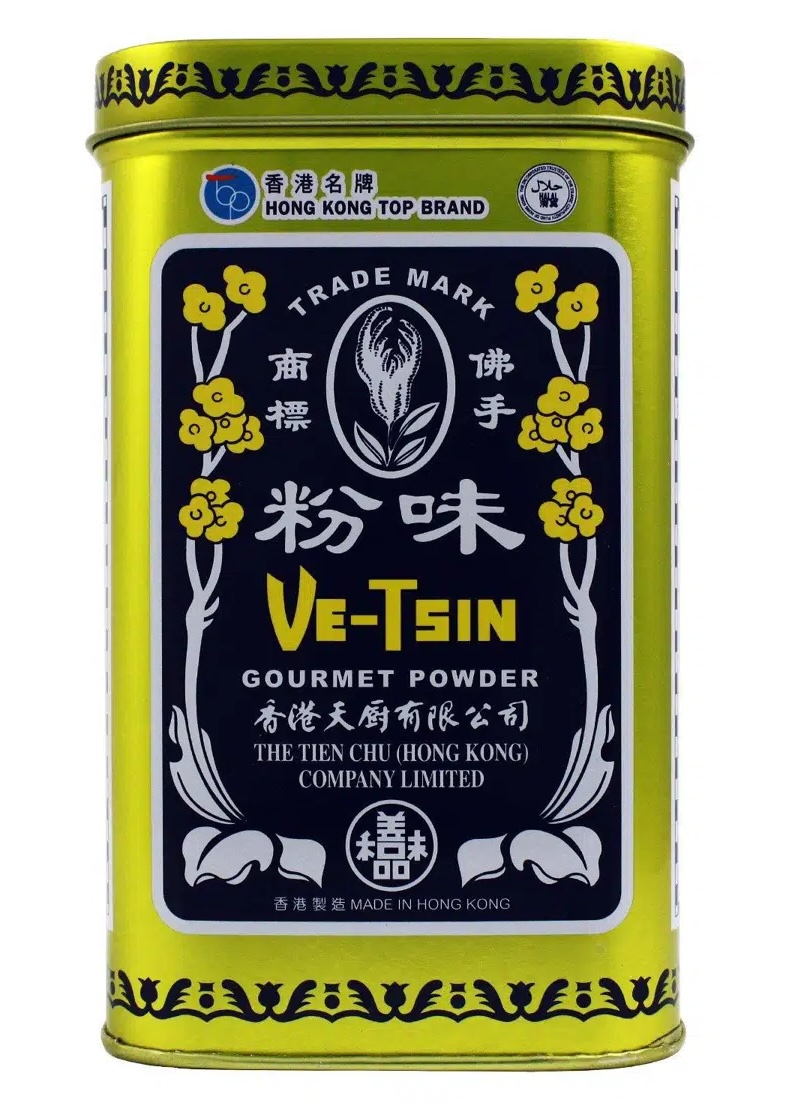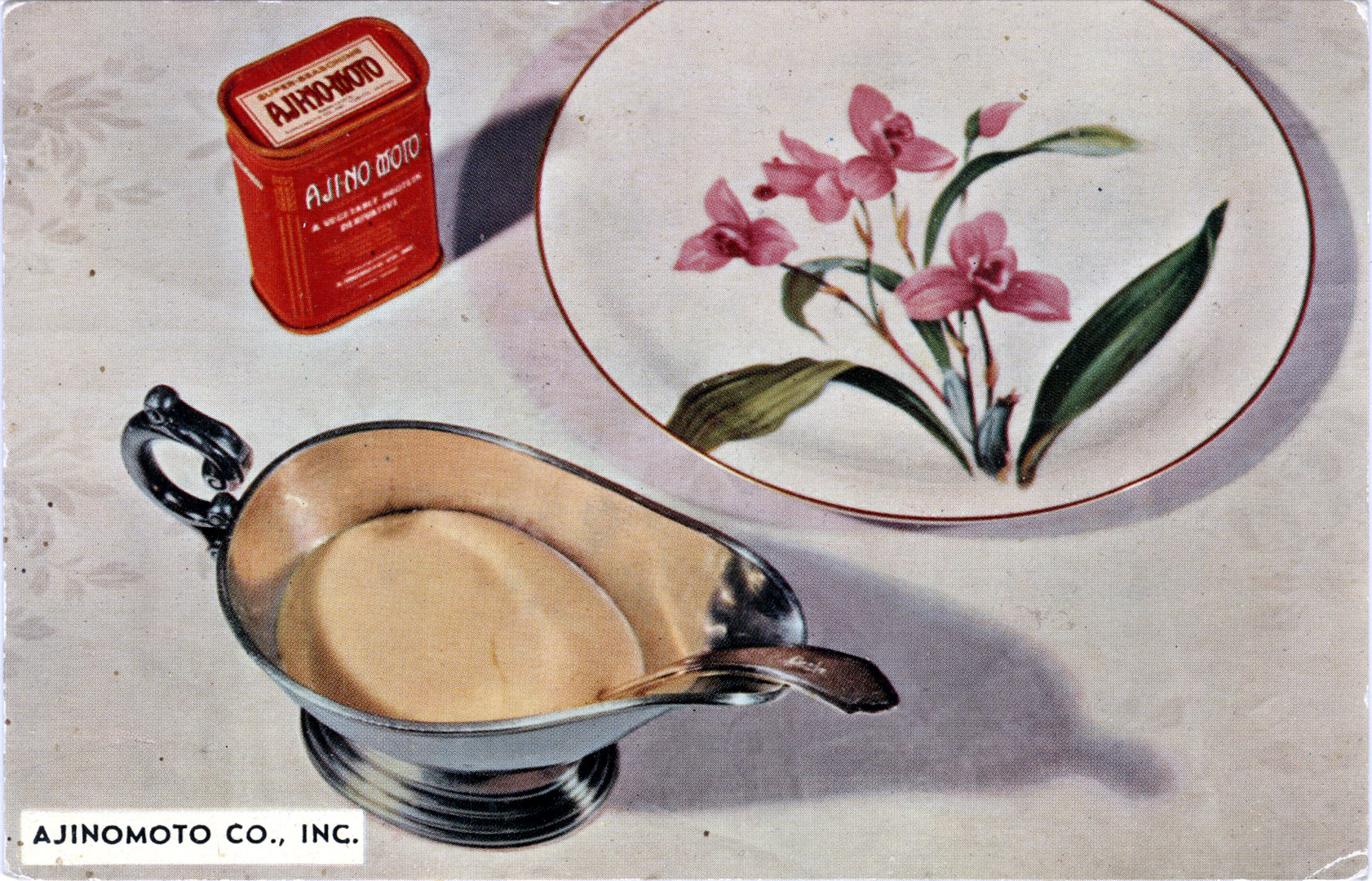Part of the series The Story of MSG
The Story of MSG: Adoption
How did MSG go from the science lab to dinner tables around the world?
Previously in this series: Discovery, the story of how umami and MSG were first discovered by the Japanese chemist Kikunae Ikeda.
Kikunae Ikeda’s discovery of MSG and umami was undoubtedly both a pioneering scientific moment and a huge cultural change, influencing the way people cook around the world. But that cultural change was by no means inevitable, and even in hindsight looks implausible. How did a crystalline white powder, discovered by a biochemist, make it into people’s kitchens and into their cooking repertoires? How did it become not just familiar, but a family favourite? And how did it do all that so quickly?
The answer is partly one of motivation. If Ikeda had been focused solely on science for science’s sake, or if he cared solely about his academic career, his discovery might have remained within the scientific fraternity for years. But that wasn’t what drove Ikeda. He had a desire to improve the nutrition of the masses, and thought that MSG was the answer because it could cheaply make bland-but-nutritious food tasty.
And so, shortly after discovering MSG, Ikeda founded a company with the aim of commercialising MSG. His co-founder was Saburosuke Suzuki II, whose family owned a chemical company that specialised in extracting iodine from seaweed. Ikeda brought the knowledge of amino acids; Suzuki brought the commerciality and chemical capability. They called the new product Ajinomoto, which means “essence of flavour”.
Ikeda and Suzuki’s initial approach was to target soy sauce brewers, restaurateurs, and other manufacturers of food on a larger scale. That made sense: if your mission is to change a nation’s eating habits, you’re better off finding points of leverage at which one change could influence a lot of people. But they found it immensely hard to gain traction; chefs rejected MSG as being a shortcut, and stuck to the traditional methods of imbuing their foods with umami. As a result of these struggles, Ajinomoto didn’t turn a profit for the first four years of their existence.
The breakthrough came when they shifted their attention away from restaurants and professional cooks, and began marketing MSG directly to Japanese housewives. Japanese women were experiencing huge cultural changes as Japan modernised and westernised. Girls’ schools were defining a new role for women, one consonant with the future direction of Japan. As Jordan Sand notes:
“Twentieth-century Japanese women whose mothers had learned to cook from their mothers – or whose mothers had only overseen the household accounts and allowed servants to do the actual cooking – consumed recipe books and newspaper columns filled with new hybrids like teriyaki and tonkatsu and attended cooking courses where male chefs imparted the secrets of their art. These developments all made bourgeois women of the late Meiji generation particularly receptive to new culinary devices and ingredients, particularly ones that claimed rationality and convenience based on scientific research.”
MSG was the perfect ingredient for the modern Japanese woman. It was quick and convenient, was the product of the most modern of scientific discoveries, and tasted great. Although it was expensive, Ajinomoto packaged their product in a glass bottle reminiscent of a luxury perfume. They sent a sample bottle and a recipe book to every graduate of Japan’s higher schools for women, positioning MSG as a pure and scientific way for the enlightened modern housewife to provide for her family. By 1931, Ajinomoto were making over a thousand tons of MSG every year.

As well as culturally and societally, Japan spent the early twentieth century transforming itself militarily. Japan at this time was an expansionist empire, with ambitions to conquer and control the whole Pacific. It had expanded into northern China and Taiwan in 1895, following the First Sino-Japanese War, and from the 1910s to the end of World War II launched invasions and in many cases brutal occupations of Korea, much more of China, the Philippines, Burma, Thailand, Cambodia, Laos, Vietnam, Indonesia, Malaysia and countless Pacific islands.
Where the Japanese army went, MSG went with them. It’s reasonable to say that nobody relished the experience of Japanese occupation, but reactions to MSG were somewhat more positive than reactions to the occupiers who brought it with them. In Taiwan, where Ajinomoto advertised heavily, MSG was enthusiastically embraced, first in restaurants and street-food stalls and then in home kitchens. To this day, Taiwan still consumes more MSG per capita than any other country.
In mainland China, it found particular success as a way of zhuzhing up vegetarian food, important in a country with such a large Buddhist population. But while MSG in general was embraced, Ajinomoto itself was seen as a problematic symbol of Japanese imperialism, and was rejected as a brand by the Chinese population in favour of homegrown manufacturers like Tien Chu, who specifically targeted Buddhist consumers with an MSG product called “Buddha’s Hand”. Both Ajinomoto and Tien Chu became export success stories, spreading from China to other places in Asia with significant Chinese populations, particularly Hong Kong, Singapore and Malaysia.

The Chinese diaspora then took MSG with them when they travelled further afield to Europe and North America, often choosing to open and work in restaurants. In the American case, highly restrictive and explicitly anti-Chinese immigration laws almost entirely forbade Chinese citizens from moving to the US, but a loophole made an exception for restaurant owners. The result was a boom in Chinese restaurants from the 1910s through to the post-World War II years.
This blossoming of Chinese restaurants definitely helped introduced American and European palates to MSG. But it wasn’t the only route MSG took. From as early as the 1920s, Ajinomoto was selling tons of MSG to industrial food manufacturers like Campbell’s soup, who included MSG in their products as a flavour enhancer. From there it found its way into everything from ready meals to potato crisps, whether the people eating them knew it or not.
MSG took over the world in the first place, then, because its creator was relentlessly focused on commercialising and scaling his innovation, and wasn’t content for it to languish in the science lab. He, and Ajinomoto, saw how Japanese women were adapting to the rapidly shifting culture in which they lived, and gave them a product that made them feel modern and sophisticated. MSG also benefited from an accident of history, having been discovered and commercialised in a Japan that was about to dominate Asia militarily and take its new culinary culture with it.
MSG’s second wave of growth came from becoming an ingredient of the Asian diaspora as people moved en masse both within and beyond Asia. It assumed that role in part because it’s so portable. It’s dry, it never goes off and it has no sensitivity to temperature, so it’s easier to transport and import than some of the other ingredients that might be required to create the authentic cuisine of your homeland. That means it comes in handy as a sort of one-size-fits-all solution to creating Asian cooking in a new place, with new local ingredients.
By the 1940s and ’50s MSG was firmly established across the globe. But the nature of its early uses, in Chinese food and in industrially processed foods, were to colour perceptions of MSG in Europe and particularly the United States. It was seen as something either artificial or suspiciously exotic. And so MSG had become a ubiquitous success – but also set itself on a path towards controversy.
Next in the series: Controversy, exploring how MSG became public enemy number one and the subject of a health scare.

Add a comment